#historic archeology
Text

Chamber pots were used for indoor toilet needs. These two annular ware pearlware chamber pots were excavated at a historic site in Prairie du Chien and date to circa 1830. They were reconstructed after excavation, and one handle and both covers are missing. The banding on the pots is what is called annular ware design, and the main decoration is a seaweed pattern.
9 notes
·
View notes
Text

2,200 year old Greek armbands
#snake#snake jewelry#snake bracelet#snake cuff#greek tumblr#ancient greece#gold jewelry#gold bracelets#historical jewelry#history#world history#greece#jewelry#ancient history#ancient#august#summer#archeology#toya's tales#style#toyastales#toyas tales#fashion#art#clothing#jewelry design#jewerly
1K notes
·
View notes
Text


adam and eve apple. quote translates to “I am your half”
#arqueologia#archaeologylovers#ancientcivilization#museum#art#history#photography#archaeological#antiquities#arte#archaeologylife#archeology#ancient#archaeologist#archaeology#antiquity#artifacts#archeologie#historical#culture#sculpture#artlovers#ancientruins#roman#ologie#mythology#photooftheday#archeotravel#arch#archeologicalsite
606 notes
·
View notes
Text

Letting my anthropologist side show
#anthropology#anthropologist#history#historical anthropology#archeology#reading Microhistories by Giovanni Levi rn#and it shows
1K notes
·
View notes
Photo



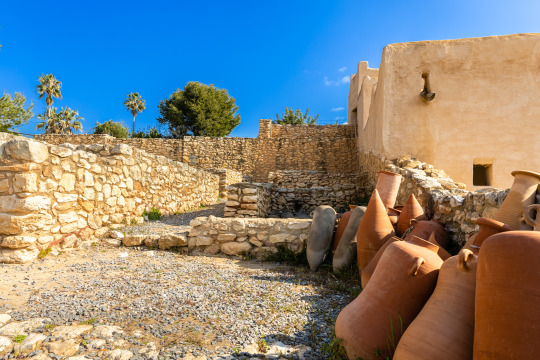

The archaeological site Iberian Citadel of Calafell (Penedès, Catalonia) was a fortified residence built by the Cessetani people (one of the Ancient Iberian peoples) and inhabited between the 6th and 2nd centuries BC. Its destruction was probably due to the Roman occupation.
A part of the archaeological site has been rebuilt in the original techniques to serve two purposes: one, it allowed archaeologists to research the building methods through experimental archaeology; and two, to show what an Ancient Iberian village from around the year 200 BC would look like. You can see the result in these photos: the foundations and lower part of the walls are made of stone to keep out the humidities from the ground, and the rest of wall is made of rammed earth, with ceilings using wooden beams and reed fences. The research focused on those elements that rarely leave a trace, for example the inclination of the roofs (when the walls and roofs are made of a material that doesn't resist the passage of time, like rammed earth) and water draining.
Photos from Enoturisme Penedès and Visit Calafell. You can find the results of the reseach in the article linked here.
#arqueologia#història#calafell#catalunya#ancient iberians#archeology#archaeology#antiquity#iberian#culture#history#historical#travel#europe#southern europe#protohistory#iron age#experimental archaeology#archaeological site#ancient iberian#ancient
70 notes
·
View notes
Text
"Of the 25 skeletons studied, 23 showed marks compatible with violent death. These were mainly penetrating puncture wounds and blunt force injuries and were found on the parts of the body that were most vulnerable to and unprotected from the weapons of the time. “We observed many lesions on the upper part of the skull, the cheeks and the inner part of the pelvis, which is consistent with the hypothesis that we are dealing with warriors,” explains Rissech. It was by studying the bone proportions that she realised that among the warriors there was a woman.
Typically, the skeletons of men and women have specific characteristics that differentiate them. “The morphology of the facial bones and the pelvis, are the most obvious examples,” explains Rissech. In some individuals, these characteristics may not be decisive when it comes to determining sex, but in the case of these remains there was little room for error. Who was this woman? Was she part of the order? Did she have the same status as the other knights?
On the one hand, the woman’s injuries led the research team to believe that she participated and died in battle, as there was no sign of bone regrowth in her injuries. “She may have died in a manner very similar to that of male knights, and it is likely that she was wearing some kind of armour or chain mail,” says Rissech. On the other hand, she did not have the same dietary indicators as some of the individuals analysed: “We observed a lower level of protein consumption in the case of this woman, which could indicate lower status in the social group,” he says. Some researchers have hypothesised that she was a servant who would have been called upon to join the knights in defending the castle if the need arose, but the URV researcher does not think so: “Her work as a servant would have left signs on her bones, indicators of certain types of physical activity that we could now identify”.
In contrast, her skeleton did show attributes similar to those of the other warrior monks, whose job required them to train in the use of the sword, an activity that leaves verifiable marks which were also observed on the woman’s bones. “I believe that these remains belong to a female warrior, but further analysis is needed to determine to what extent this woman is contemporary with the other knights”, says Rissech. According to the researcher, we should picture her as a warrior of about forty years of age, just under five feet tall, neither stocky nor slender and skillful with a sword."
#history#women in history#archeology#women warriors#warrior women#lady knights#spain#spanish history#12th century#15th century#historyblr#historical figures#women's history
133 notes
·
View notes
Text

Dendera Temple Complex : Egypt
My mother had made the decision to travel to Israel, Jordan and Egypt. It has been a life long pilgrimage for mum. She was soo disappointed when this opportunity came up, COVID hit. Eureka this time the trip went off without a hitch. So of course I asked to share some of her photos of the trip. Some not so clear as they taken on her iPhone
#original photography#travel photography#original photographer#original artist#photographers on tumblr#ancient egypt#egyptology#egyptian#Dendera Temple Complex#archeology#Middle Kingdom ancient egypt#hieroglyphs#ancient architecture#historical architecture#history
194 notes
·
View notes
Text

Pueblo Bonito, occupied by the Ancestral Puebloans from the 9th-12th centuries.
Chaco Canyon, New Mexico
June 2018
#Chaco Culture National Historical Park#chaco#chaco canyon#national park service#ancestral puebloan#archeology#archaeology#national park#ruins#native american#travel#architecture#original photography#photographers on tumblr#photography#lensblr#indigenous architecture#pueblo bonito#new mexico#wanderingjana
35 notes
·
View notes
Text

Here's a hell of a unique field school opportunity with the University of Kansas: a dig at the homestead of the notorious Bloody Benders.
The Bender family homestead was located along the Great Osage Trail in the 1870s, and they used portions of their farmhouse as a general store and inn catering to those traveling along the Trail. In reality, the Benders had designed the home to effectively kill, rob, and bury the bodies of the those who stopped at the homestead. The family are believed to have killed at least 11 people. They abandoned the homestead when suspicions about what happened to a series of missing people began to focus on them. It is unknown what happened to the Bender family after they fled the area.
Here's a news article that discusses what the exact goals and plans for the field school are, and how it came about.
#archaeology#archeology#field school#Bloody Benders#historical archaeology#I am not associated with this school or program
60 notes
·
View notes
Text

Storm clouds hover over Britain's most mysterious historic landmark
#Stonehenge#Wiltshire#Salisbury Plain#dark clouds#mystery#rural britain#historic#atmospheric#English countryside#UK#archeology#megaliths#stone circle#bronze age#earth & sky
38 notes
·
View notes
Photo

The aligned, partially buried logs in this photo are remnants of a historic corduroy road. Corduroy roads were built to traverse wet or swampy ground that would otherwise make travel impractical. Logs for the road usually were laid down perpendicular to the direction of the road, sometimes on strings of logs running parallel to the road. Corduroy roads also could consist of multiple layers of logs with alternating orientations perpendicular and parallel to the road or logs, possibly in layers, mixed with stones, soil, and other materials (McQuinn 2018:151-153, Figure 9). This example with perpendicular logs and at least one string of parallel logs from Rusk County, Wisconsin, connects to a logging road corridor and likely was used as a logging road. By 1867, loggers in the area were working in the summer as well as the winter, and such roads created firmer pathways for wagons prior to railroad construction (RCHS 1983:6-7).
McQuinn, Corey D.
2018 Corduroy-Road Archaeology in Cultural and Historical Context: A Case Study from the New York Frontier. Historical Archaeology 52(1):140-163.
Rusk County Historical Society (RCHS) (compiler)
1983 History of Rusk County, Wisconsin. Rusk County Historical Society, Ladysmith, Wisconsin.
129 notes
·
View notes
Photo









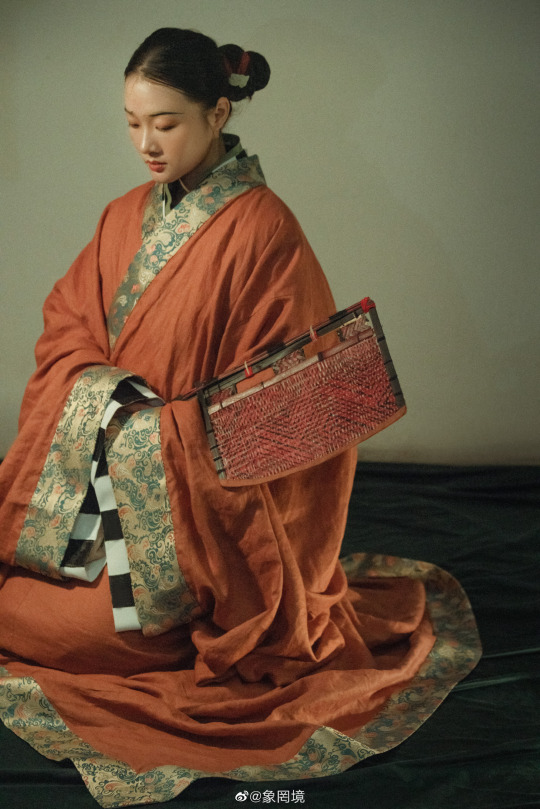






【Historical Artifact Reference】:
Warring States Period(475–221 BC) Silk painting:"Silk Painting of Figures, Dragons and Phoenixes"
Unearthed from Chu (state) Tomb in the southeastern suburb of Changsha City, Hunan Province.It is one of the earliest surviving Chinese silk paintings

・Painted Wooden Figurines Unearthed from the Chu (state) of the Warring States Period Tomb
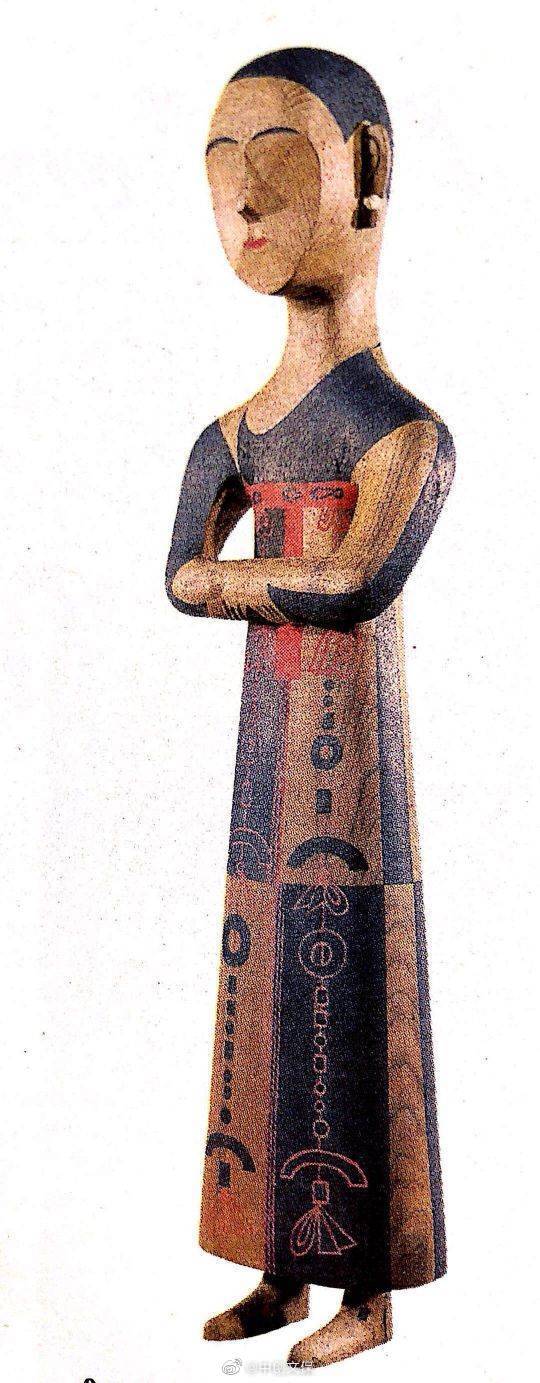
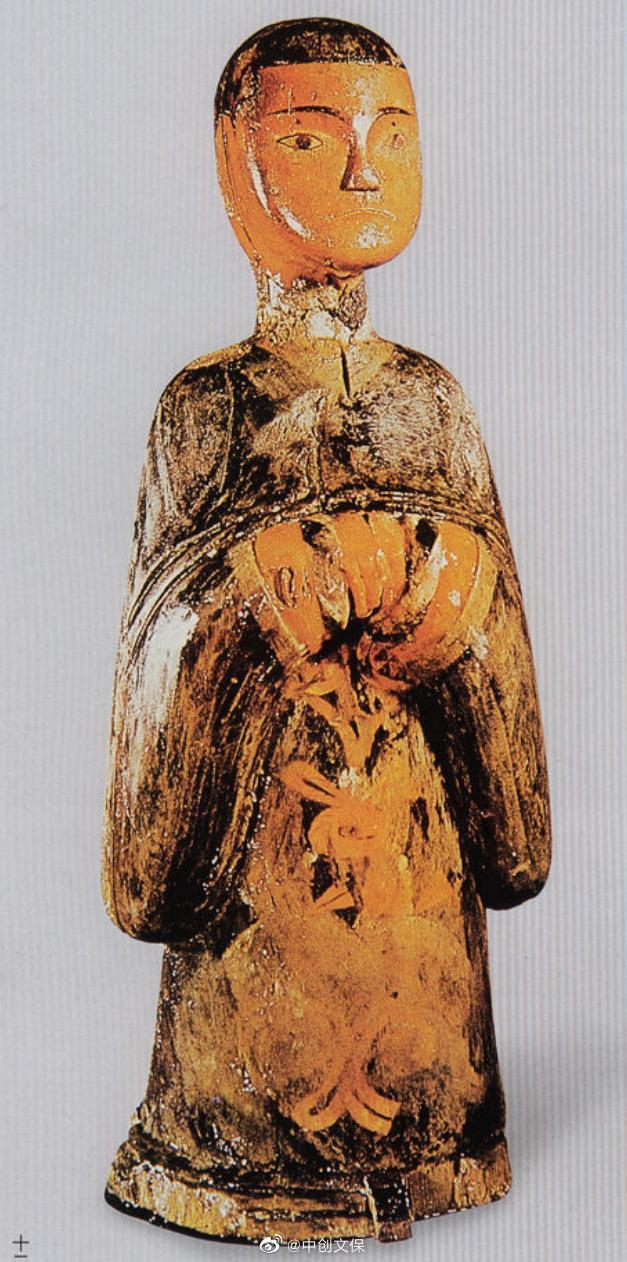
・ 直裾(one of the Deep garment) Unearthed from Mashan Chu State Tomb

[Hanfu · 漢服]Chinese Warring States Period(475–221 BC) Chu (state) Traditional Clothing Hanfu Photoshoot Based On Relics
【History】
The creation of this photographic story is based on the Songs of Chu(楚辞) in the late Chu period"Nine Songs·Shao Si Ming/九歌·少司命":
" 荷衣兮蕙带,儵而来兮忽而逝".
“Wearing a lotus dress and wearing a cypress belt, I suddenly come and suddenly leave“
people in Chu believed in 巫( "shaman" or "sorcerer")
_______
Planning | Photography: @象罔境
Model:段老师,@陈喜悦耶
Hairstyle: @赵长月er
Makeup | Jewelry & Fan Production: @象罔境
Hanfu Fabric: @慕予传统服饰工作室
🔗Weibo: https://weibo.com/2825602213/MmhGpxZMe
_______
#Chinese Hanfu#Chu (state)#Warring States Period(475–221 BC)#Pre-Qin#Nine Songs·Shao Si Ming/九歌·少司命#china history#hanfu history#archeology#chinese traditional clothing#Chinese Costume#recreation#chinese historical fashion#china#jade#shaman#象罔境#陈喜悦耶#赵长月er#慕予传统服饰工作室#chinese#Chinese Aesthetics#漢服#汉服#楚国
588 notes
·
View notes
Text

Gold armlet, the treasure of the Queen Amanishakheto, Nubia (modern day northern Sudan), 1st century AD
#history#antiquities#art#jewelry#ancient art#historic jewelry#nubia#nubian art#ancient history#archeology
411 notes
·
View notes
Text
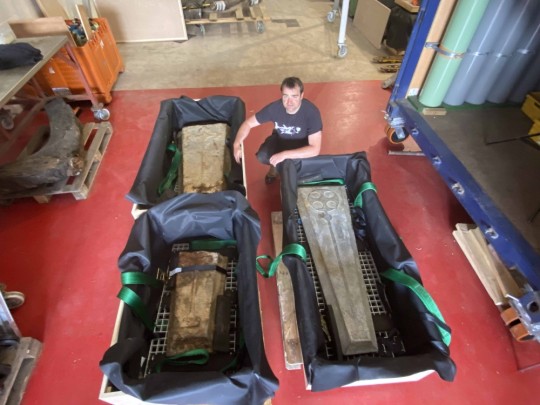
Medieval Grave Slabs Recovered From Historic Shipwreck
Maritime archaeologists from Bournemouth University have recovered two medieval graves slabs which have been lying at the bottom of Studland Bay for nearly 800 years.
The slabs, carved from Purbeck marble, were amongst the cargo of England’s oldest historic shipwreck, which sank off the Dorset coast during the reign of Henry III in the thirteenth century.
The site has been named the “Mortar Wreck” because other items in its cargo included a large number of grinding mortars, also made from Purbeck stone. Details of the discovery will shortly be published in the journal Antiquity.
Divers and archaeologists led by BU brought the slabs to the surface on 4 June in a two hour operation from a depth of around seven metres where the stones lay.
One immaculately preserved slab measures one and a half metres and weighs an estimated 70 kilogrammes. The other, much larger slab is in two pieces, with a combined length of two metres and a weight of around 200 kilogrammes.
Both have carvings of Christian crosses which were popular in the thirteenth century and the research team believe they were intended to be coffin lids or crypt monuments for high status individuals in the clergy.
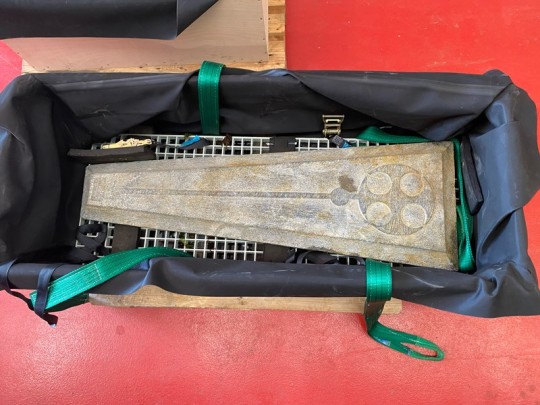


“The wreck went down in the height of the Purbeck stone industry and the grave slabs we have here were a very popular monument for bishops and archbishops across all the cathedrals and monasteries in England at the time,” explained Tom Cousins, a Maritime Archaeologist at Bournemouth University who led the recovery. “Examples have been found in Westminster Abbey, Canterbury Cathedral and Salisbury Cathedral, he added.”
The slabs will now be desalinated and conserved by the Bournemouth team until they can be put on public display along with the other recovered artefacts in the new Shipwreck Gallery when Poole Museum reopens next year.
The site of the Mortar Wreck was first discovered as an ‘obstruction’ in 1982 but was assumed to be a pile of rubble on the seabed. Its significance was not realised until 2019 when Tom and a team from the University dived the site on the suggestion of local charter skipper Trevor Small and uncovered the secrets lying under the sand.
The continued recovery of the artefacts, such as the mortars and grave slabs, will allow the Bournemouth team to learn more about thirteenth century life and the ancient craft of stonemasonry.
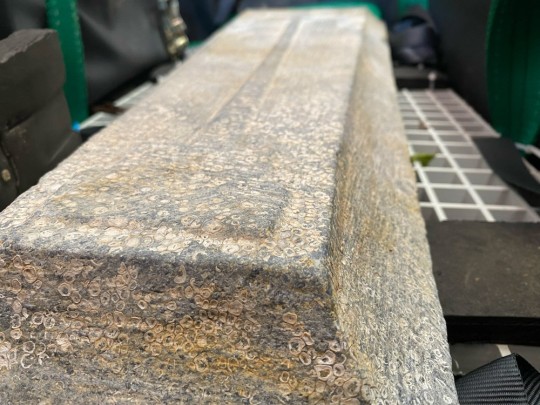
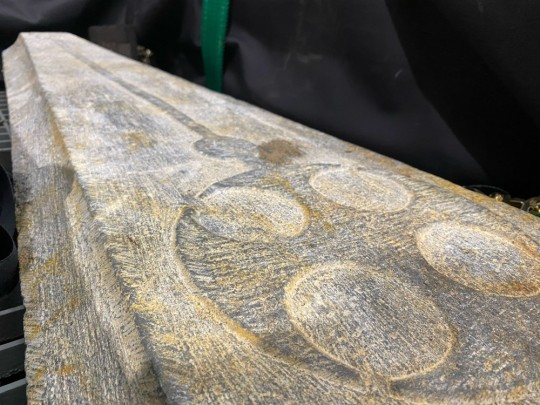
“Although Purbeck marble was quarried near Corfe Castle there has always been a debate about how much work was done here and how much was done in London. Now we know they were definitely carving them here, but they hadn’t been polished into the usual shiny finish at the time they sank so there is still more we can learn,” Tom said.
The team will continue to explore and protect the wreck over the coming years which they hope will include an operation to record the timber frames of the ships hull which are still well preserved in the sand. Tom is also planning to use this as a training opportunity for his students at the university.
“The future aim of the project is to train the next generation so that they get the same opportunities I had. We’ve already started teaching our second-year students to dive and as they get into the third year we’re going to take them out to sea and teach them their first steps to becoming maritime archaeologists,” he said.



#Medieval Grave Slabs Recovered From Historic Shipwreck#Dorset coast#Mortar Wreck#Purbeck marble#Henry III#Maritime archaeologists#archeology#archeolgst#history#history news#shipwreck
50 notes
·
View notes
Text

Medieval aqueduct that used to take water to Morella, the walled city visible on the hill at the back of the image, located in the Valencian Country. The Morella aqueducts were built in the 13th and 14th centuries. Parts of the aqueduct were used to bring water for watering the fields until the 1960s.
Photo by Els Ports turisme. Info from Generalitat Valenciana.
#morella#país valencià#fotografia#història#travel#europe#wanderlust#travel photography#southern europe#archaeology#arqueologia#archeology#medieval#middle ages#13th century#14th century#valencian country#historical#earth#beautiful places
89 notes
·
View notes
Text
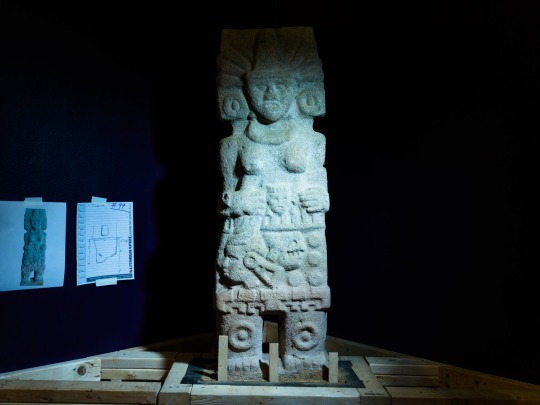
"The woman, carved in pale stone, wears a peaked headdress, circular earrings and the wide hip belt and kneepads of an ancient Mesoamerican athlete. Her expression is fierce, her pose triumphant. In her right hand, she grips the severed head of a sacrificial victim by the hair.
The sculpture is the first life-size representation of a ritual ballplayer found to date in the Huasteca, a tropical region spanning parts of several states along the Gulf Coast of Mexico.
Like virtually every other Mesoamerican society, the inhabitants of the Huasteca played what is simply known today as “the ballgame,” in the time before the Spanish conquest. Despite its name and ties to modern soccer, this game was more sacred rite than sport.
For the players, who bounce a solid, dangerously heavy rubber ball off their hips, it was a means of communing with the gods, one that sometimes culminated in human sacrifice.
The ballplayer will be among the most important artifacts in an exhibit, “Ancient Huasteca Women: Goddesses, Warriors and Governors,” at the National Museum of Mexican Art in Chicago, opening Friday. This is the first time the piece, which was discovered by landowners about 50 years ago near Álamo, Veracruz, has been on public display.
“It is a totally atypical sculpture,” said David Antonio Morales, an archaeologist with the National Institute of Anthropology and History in Veracruz, who stumbled upon it last November when he was visiting private collections.
He contacted María Eugenia Maldonado, one of the few archaeologists specializing in the pre-Columbian past of the Huasteca. At first, she didn’t think the figure could be real. It would be the first stone sculpture of a ballplayer found in the region, the first female ballplayer and the first at this scale holding a decapitated head.
“It’s putting all the elements into a single sculpture that had never been seen together before,” she said. “That is the importance of this sculpture.”
Kim N. Richter, a historian of pre-Columbian art at the Getty Research Institute in Los Angeles and an expert on female statues from the region, had not seen the piece. It “would be really important because we don’t have any monumental sculptures of ballplayers in the Huasteca to date, male or female,” she said. “So that would be a huge discovery in itself.”
Dr. Maldonado says she hopes the exhibition, with 100 artifacts, will challenge what she calls “superficial” interpretations of women’s roles that have riddled scholarship of the region. For decades, archaeologists have described sculptures of men as individuals in positions of power, like priests or rulers. They’ve tended to brush aside sculptures of women as images of a fertility goddess.""
#history#women in history#women's history#sportswomen#athletes#women in sports#mesoamerica#mesoamerican history#mexico#mexican history#huasteca#historyblr#historical figures#artefacts#sculptures#archeology
67 notes
·
View notes